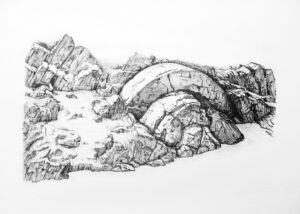
Bev Lewis; Anticlinal Fold
Bev Lewis, artist has donated some beautiful stone lithographs which we will raffle at our AGM, Monday 8th September, 6pm at the Castlemaine Senior Citizen’s, Mechanics Lane, Castlemaine. All welcome.

Bev Lewis; Anticlinal Fold
Bev Lewis, artist has donated some beautiful stone lithographs which we will raffle at our AGM, Monday 8th September, 6pm at the Castlemaine Senior Citizen’s, Mechanics Lane, Castlemaine. All welcome.
Event: talk by Tanya Loos: LIVING WITH WILDLIFE
Date & time: Monday 8th September, 6pm
Venue: Castlemaine Senior Citizens Centre, Mechanics Lane, Castlemaine.
Tanya Loos loves sharing nature knowledge about how to live more harmoniously with the animals that live where we live – and how our homes and backyards can be safe havens in a time of climate breakdown. Tanya believes there are simple steps we can take that are wildlife friendly and make sure your place is a haven.
Tanya lives in central Victoria and is passionate about wildlife and nature! In her presentations, Tanya loves drawing from ecological science to educate and inspire people to care about wildlife and wildlife habitat. She has worked as a Woodland Bird Project Coordinator for Connecting Country and Biodiversity Projects Officer for Macedon Ranges City Council – and at present she is Avian Influenza Response Coordinator at BirdLife Australia.
Tanya will be sharing her passion through an entertaining presentation at the Friends of the Box-Ironbark Forests AGM at 6pm on Monday 8th September at the Castlemaine Senior Citizens Centre, Mechanics Lane, Castlemaine. This will be followed by a light supper and the opportunity to buy Tanya’s book ‘Living with wildlife’, FOBIFs excellent field guides and a raffle ticket for gorgeous lithographs of the anticlinal fold, hakea or banksia by local artist Bev Lewis.
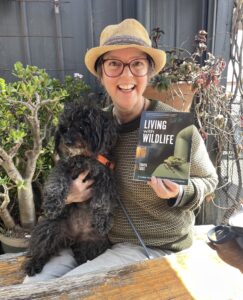
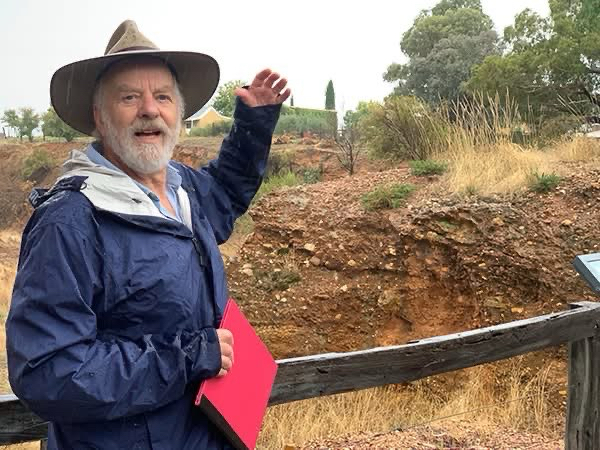
Clive Willman
There will be a free presentation ‘Scientists on the goldfields, 170 years of geoscientific discoveries’ by leading geologist Clive Willman.
Venue: Northern Arts Hotel, 359 Barker St Castlemaine
Date: Wednesday 20th August
Time: 6.30pm
This will be repeat of the presentation given at ‘The Alchemy of Gold – the Golden Transformation of Victoria’ conference in May 2025.
This event is hosted by the ‘Castlemaine Society Inc’ (CASSOC), which will be holding its AGM at 6pm before the guest speaker at 6.30pm.
As part of the new Campbells Creek missing link project, Rob Law from Friends of Campbells Creek has created a ‘soundtrail’. It starts at the Forest Street entrance to the walk and continues through to the end at the Campbells Creek playground.
Living alongside the creek, Rob has noticed that since the missing link of the track was opened, there has been an increase in use. The increase has been at least a 600 per cent. The accompanying soundtrail was launched a couple of months ago and already scores of people are downloading and listening to it along the trail. Relevant signage along the creek is coming shortly.
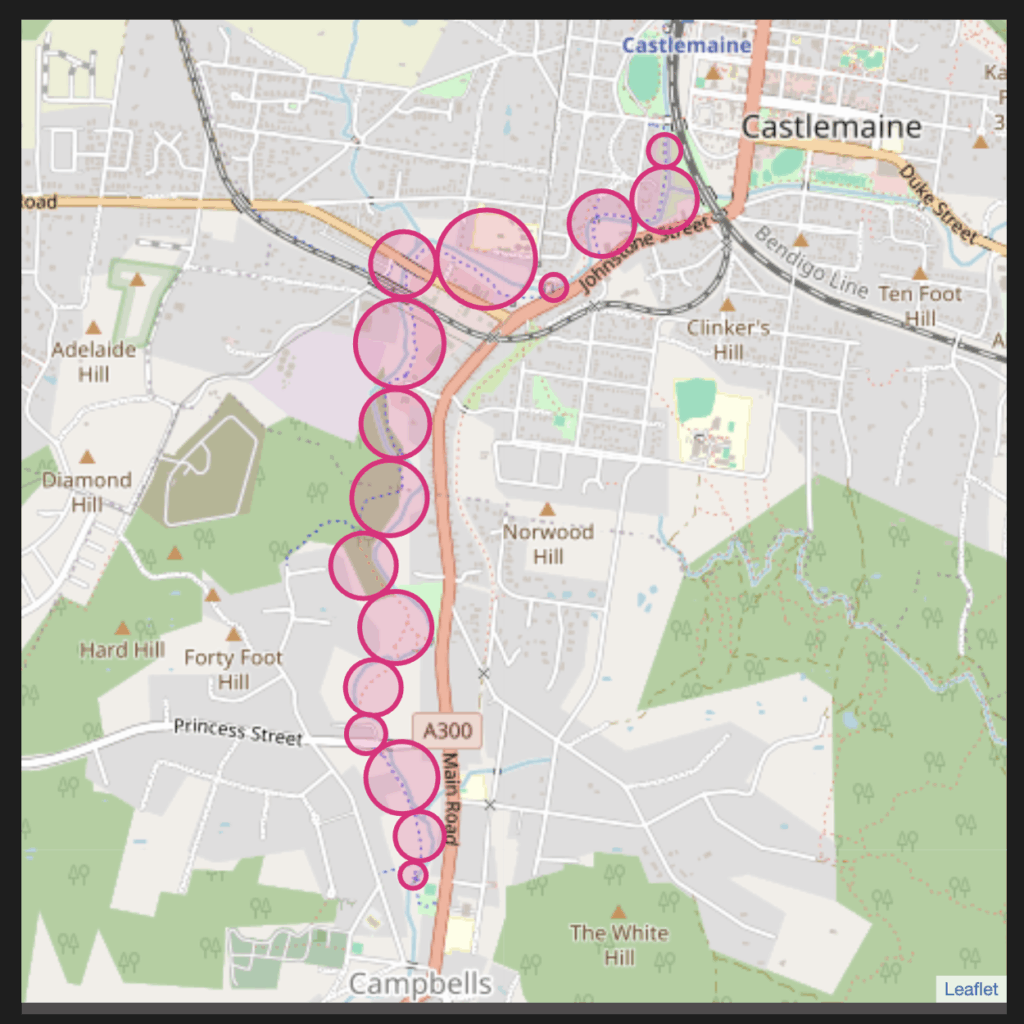
Map showing the walk and where the recordings are triggered.
The technology used is a phone app called ‘soundtrails’ that you can download. As you walk along the trail, the app uses GPS to trigger the audio on your phone. Walkers can listen to stories about the creek, its ecology, history and values, as well sounds of nature from different times of day and spread throughout the year.
To operate the app, visit soundtrails.com.au/campbells-creek and download the app from the Apple Store or Google Play. You will need to use headphones. Once you are at either end of the track, just open the app.
“The goal of this project is to invite people down there to spend some time, getting to know it, slowing down and listening more deeply, rather than just passing through for exercise, because it’s much more than that. Through doing this project, I uncovered all of these amazing people who live here, who have some knowledge of the creek that is specific. There are a range of different perspectives as well, from children through to people that have been here their whole lives and are in their 80s, which gives that sense of how the place changes over time as well.
I’ve been down there a lot with my kids and their friends and spending time in their world and watching how for them, they are already very immersed in it, and we kind of have this separation, but they are very much in the place. I think that’s important for adults to think about how we relearn that, there is no boundary for them between their imaginative world and what we call the real world. Being able to tap into that sense of wonder that they have and we forget about as we become adults.”
(Rob Law quoted in the Midland Express 3/7/2025)
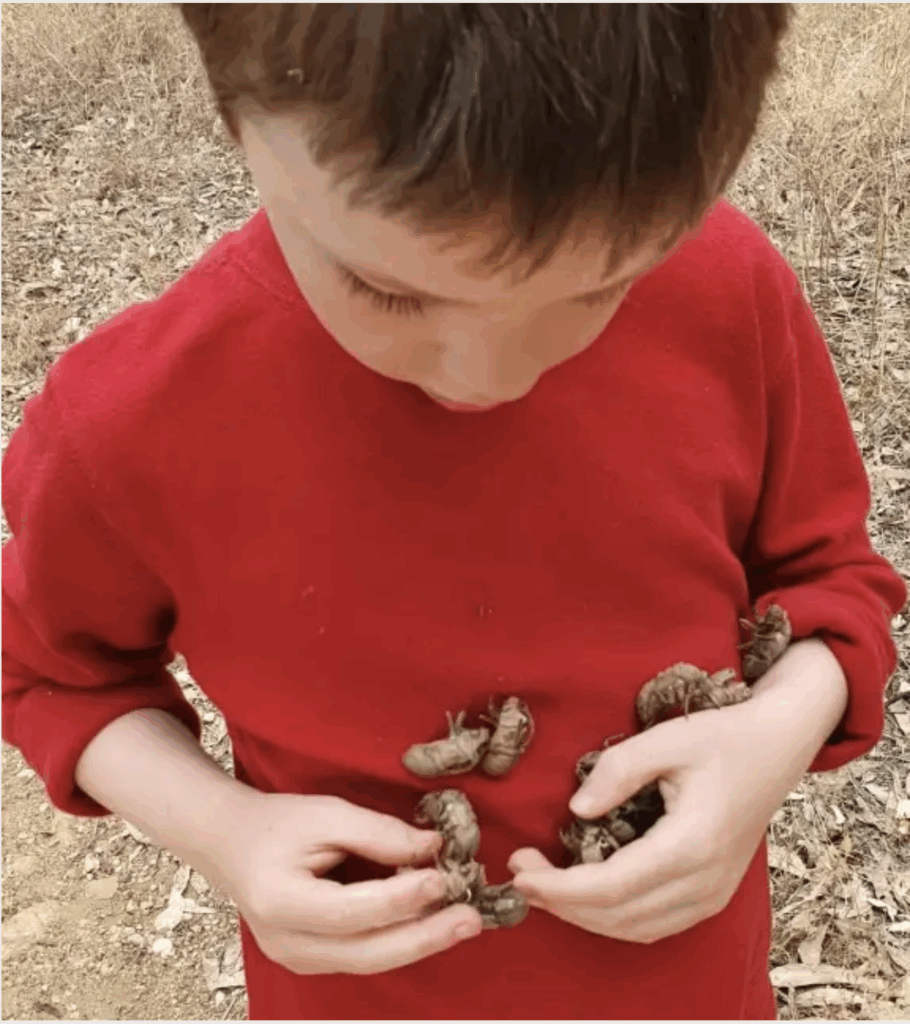
In a two minute recording on the app seven year old Ralph Maguire-Law explains the life cycle of the red eye cicadas that live along the creek.
Ever been irritated by the rubbish dumping thing? Of course, most people are—and most people wonder: what kind of person would dump rubbish in beautiful places like our bushlands?
But there’s another dimension to this problem: it starts at the source.
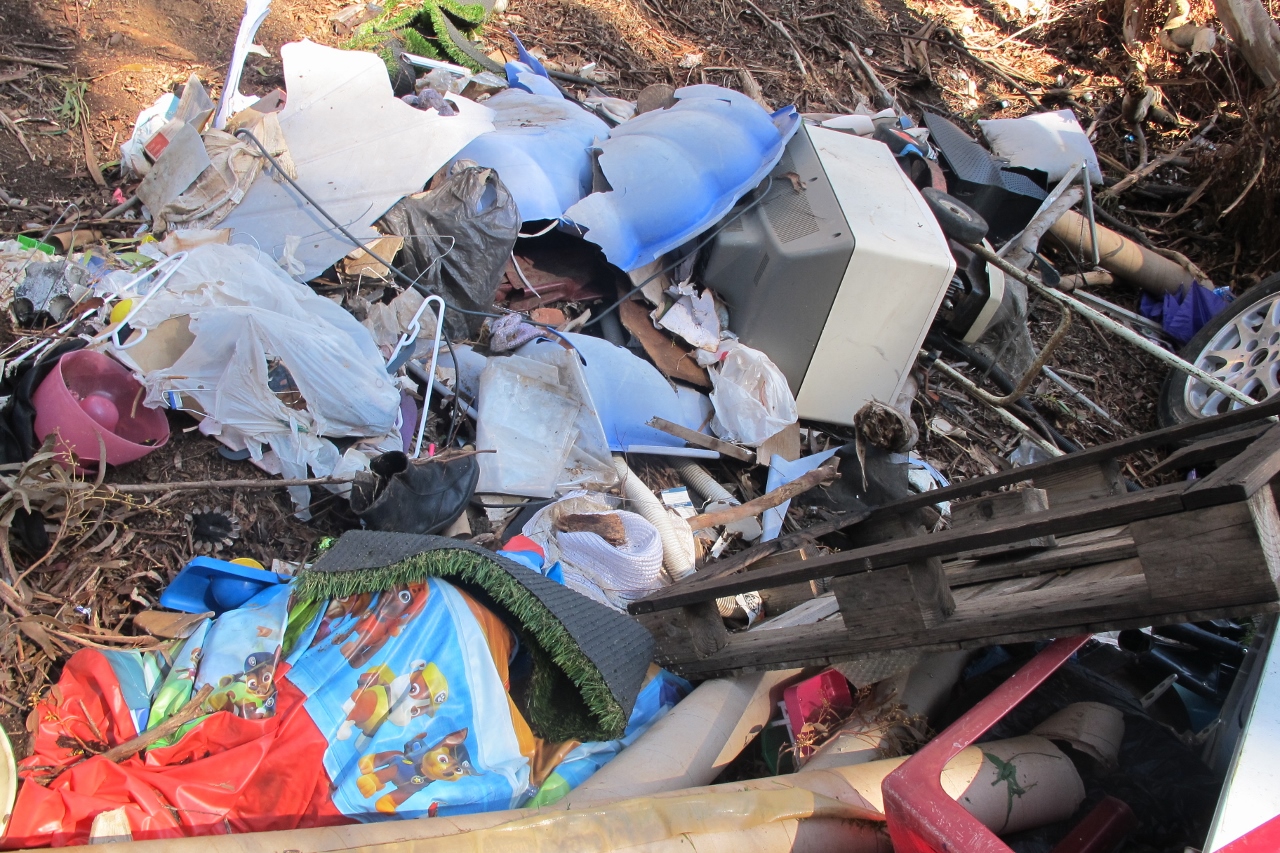
Plastic dominated rubbish pile at the Railway dam a few years ago. FOBIF has an extensive collection of photos of similar rubbish all over our region. Of course, dumpers are to blame, but the real problem starts at the production point.
Here are some fun facts: in 1950, the world produced 2 million tonnes of plastic. In 2022, the figure was 475 million tonnes; at present rates of increase, it will top 1000 million tonnes by 2060.
As if these figures weren’t bad enough, consider this: of the above quantities, 9% is recycled, about 50% ends in landfill, 19% is incinerated…and 22% slops around the planet, most dangerously in the oceans: it’s been estimated that 15 tonnes of plastic is dumped in the sea every minute!
And, of course, it’s hard not to notice that a large part of the stuff dumped in our bush is plastic.
How can such insanity persist? Guess what: it’s because plastic is ‘cheaper’ than alternative substances! And convenient, of course. If you have the stomach for some terrifying stats about Australia’s plastic use, check here.
There’s a UN conference in Geneva right now to try to hammer out a treaty to limit plastic damage: for more details check here.
And if you want to sign a Greenpeace petition urging Australia to commit to such a treaty, check here.
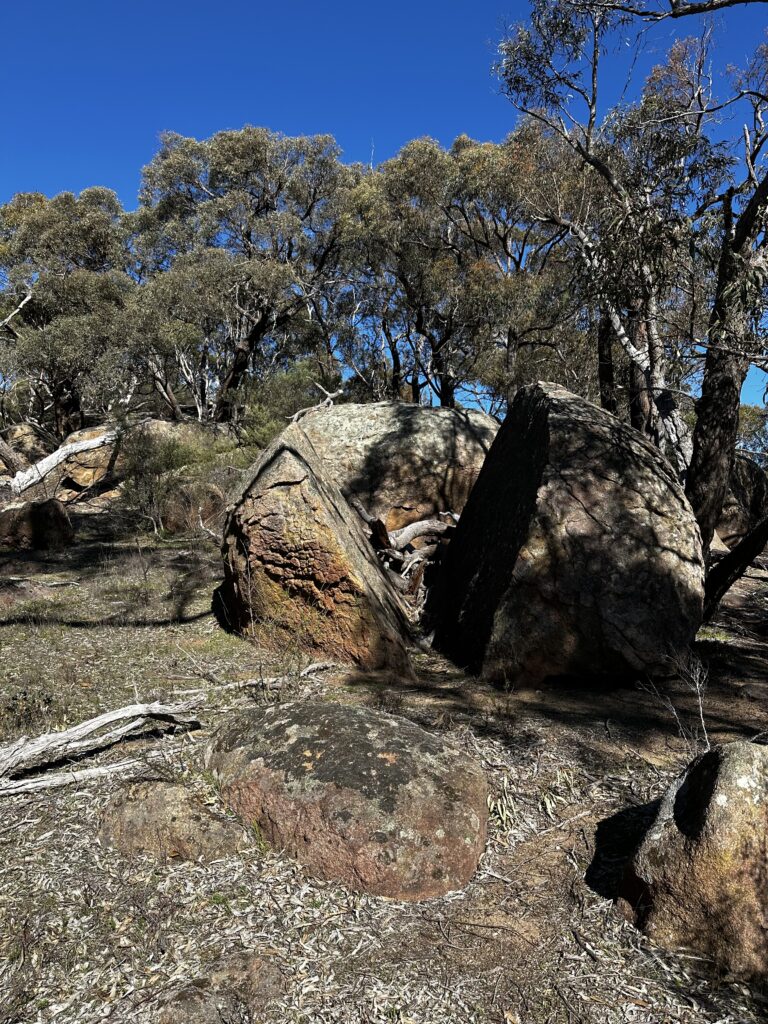
Split rock Tarrengower-Gen Blades
17th August Mount Tarrengower, Maldon
This is a scenic 5 km walk at Mount Tarrengower with Indigenous sites, local flora and great views of the surrounding countryside. The walk is of moderate difficulty, with some short, steep sections, walking off track on the ascent to the top and returning down the road. Walk leaders are Lisa Hall, Frances Cincotta and Gen Blades. Meet at the Castlemaine Community House at 9.30am or Butts Reserve, Mount Tarrengower Road at 9.50am.
Contact: Gen Blades 0431 371 065
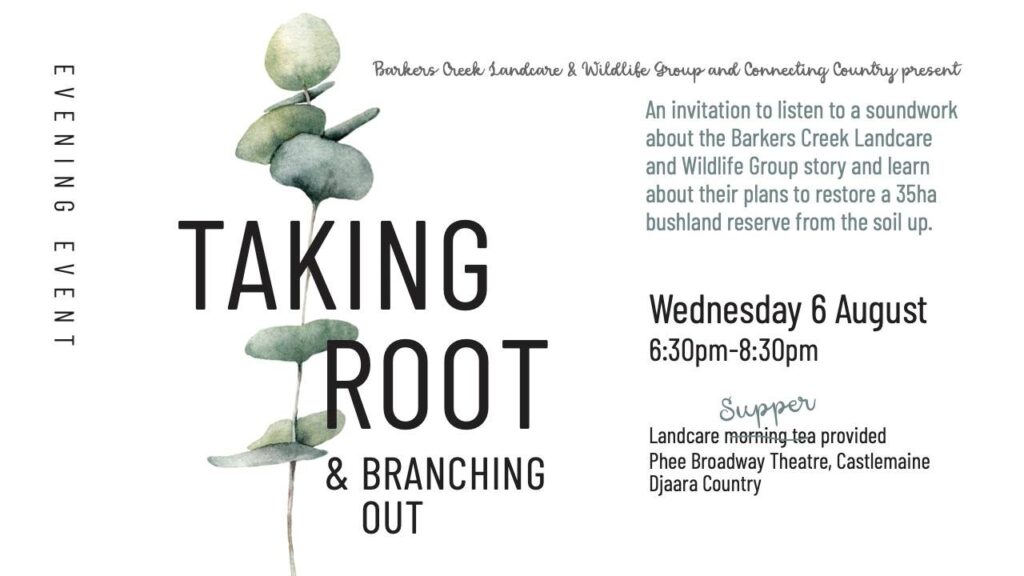
Barkers Creek Landcare and Wildlife Group and Connecting Country are presenting an intriguing event-Taking Root in Barkers Creek – an immersive soundwork/documentary exploring the environmental damage left by the 1850s goldrush – and how to fix it.
This is followed by supper and discussion.
Tickets
Wombat Forest Care have had success writing to politicians about Victorian Environmental Assesment Council (VEAC) matters. They have started a letter writing campaign to prompt the government to legislate the Central West Parks without delay.
Can you write to Maree Edwards, The Hon. Steve Dimipoilos and The Hon Jacinta Allan to legislate Mt Cole-Pyrenees and Wellsford Forests immediately, as recommended by VEAC?
These forests contain important plant and animal commumnities. According to VEAC, the variety of vegetation types in the Mount Cole–Pyrenees block provide habitat for a high diversity of flora and fauna, with 51 rare or threatened plants and 48 threatened animal species having been recorded here. Seventeen species that are part of the threatened Victorian temperate woodland bird community have been recorded in this block.
The Wellsford block provides habitat for a high diversity of flora and fauna including 32 rare or threatened species and a further seven members of the threatened woodland bird community.
Please email-
Maree Edwards MP
maree.edwards@parliament.vic.gov.au
The Hon. Steve Dimopoulos, Minister for the Environment
Reception.Dimopoulos@deeca.vic.gov.au
The Hon. Jacinta Allan, Premier of Victoria
jacinta.allan@parliament.vic.gov.au
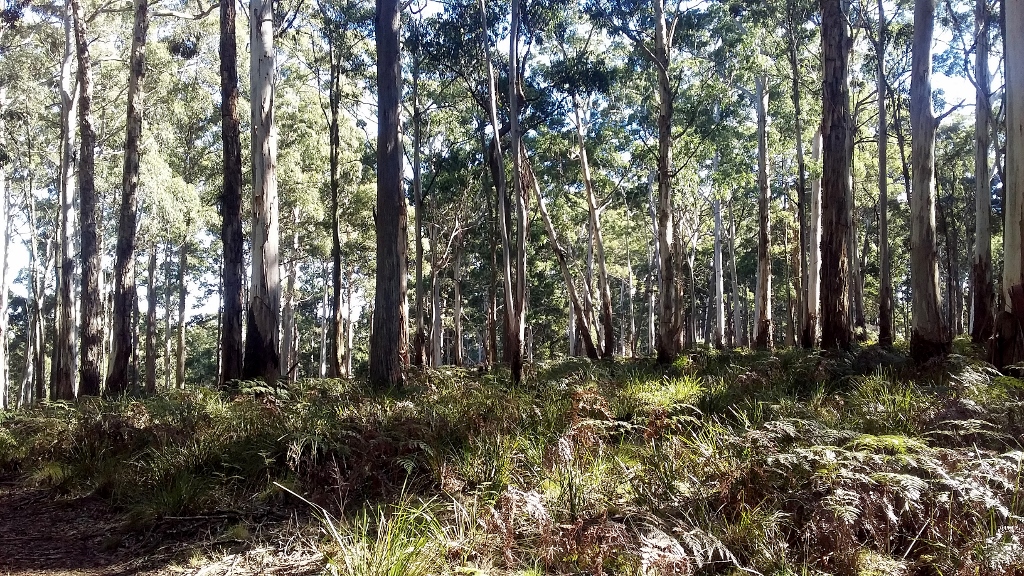
The government has accepted the VEAC recommendation for a new Wombat-Lerderderg national park.
It was a welcome sunny day for an enjoyable and interesting walk along section of the
Coliban channel near Malmsbury. Author of the book, The Coliban Main Channel: A Walking Guide, Stephen Charman, shared details from his extensive historical research & love of walking. The walk focused on the Malmsbury section of the seventy kilometre long channel, which goes from Malmsbury reservoir to Crusoe Reservoir in Bendigo. We set off from Malmsbury Reservoir Picnic Ground and followed the main channel, where Stephen pointed out features of the infrastructure of the channel, both past and present. We observed remains of diversion channels, a story of how overflow from a slaughterhouse was managed by a wooden bridge, now concrete,so that the contaminated water did not flow into the channel. The Coliban River was often in proximity and the sight and sound of running water near Ellis falls was a lovely spot to stop for some morning tea. The walk was a glimpse into the movement of water across this dry landscape over the past two hundred years. Looking at this huge piece of infrastructure raises many issues that relate to the impact of our manipulation of the landscape.
Walk leader for this month’s walk on Sunday 20th July is Steve Charman, author of “The Coliban Main Channel, A Walking Guide”.
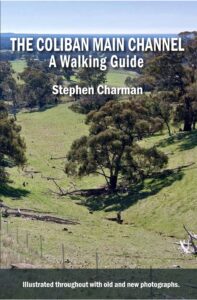
The focus of this return walk will be the Coliban Main Channel in Malmsbury, starting at Malmsbury Reservoir and describing a 6 to 7 kms loop that will, in part, return along the Coliban River. While the walk may prove disappointing for the botanists, there’ll be plenty for the history buffs. Mostly easy flat walking, but with one or two gates to climb.
Meet outside the Community House 30 Lyttleton Street, Castlemaine at 9.20am to register and organise car-pooling for prompt departure at 9.30am, or be at the Malmsbury Reservoir Picnic Ground at 10am.
Walks are free and non-members are welcome. Bring water, morning tea and lunch.
You can read our advice to walkers document here
There is no need to book in for this walk but if you have any questions you can all the walk leader Steve Charman on 0411 357 601, or from Friday 18th July you can call the walks coordinators Lisa Hall 0488 102 191 or Gen Blades 0431 371 065.